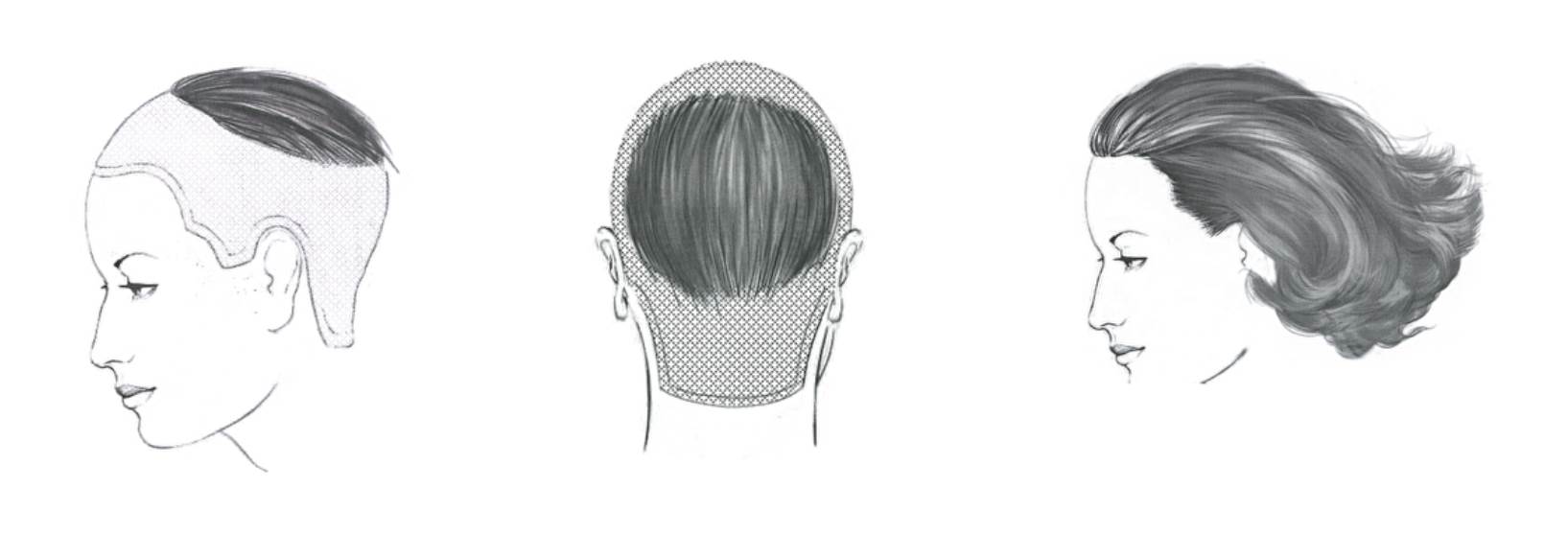The address for a special hairpiece
The different alopecia forms
Alopecia is a serious form of unwanted permanent hair loss. The causes are diverse. Chemotherapy often leads to hair loss. Regular use of certain medications can also lead to hair loss. For example, blood pressure medication is known to cause hair loss to be a side effect. Hair loss also occurs among diabetics. Heavy emotional stress, sadness, performance pressure can also lead to hair loss. It happens that during Menopause women experience hair loss, usually the beginning of Frontal Fibrosing Alopecia. Unprofessional hair treatments can eventually result in hair loss. Anyone can get alopecia, it is not dependent on age, sex or origin. Alopecia comes in different forms. The most common forms are: alopecia Areata, alopecia Androgenica, Alopecia universalis, Alopecia totalis, Alopecia cytostatica, Alopecia difussa and Frontal Fibrosing Alopeci. For more information, please refer to the Alopecia association website
Frontal Fibrosing Alopecia (FFA)
FFa is characterized by a symmetrical band of hair loss. There is permanent local hair loss in the front hairline of the hairy head, the back and the sides along the ears and on the neck (see photo below). This form of Alopecia occurs in postmenopausal women 50 years of age and older. The misdiagnosis was always made because it was still unknown. In 1994 for the first time by a dermatologist Dr. Steven Kossard. In recent years, FFA has been increasingly seen by dermatologists.
Male pattern baldness
Androgenic alopecia is male hair loss that women are also increasingly suffering from. In men over the age of 30, getting less thick hair is a normal and natural process. And is socially accepted. Sometimes a hereditary factor is involved.
Due to a condition
Illness, burns, accidents, medicines or radiation. With scars from head wounds and third degree burns, the hair loss is local and permanent.
Affiliated with




